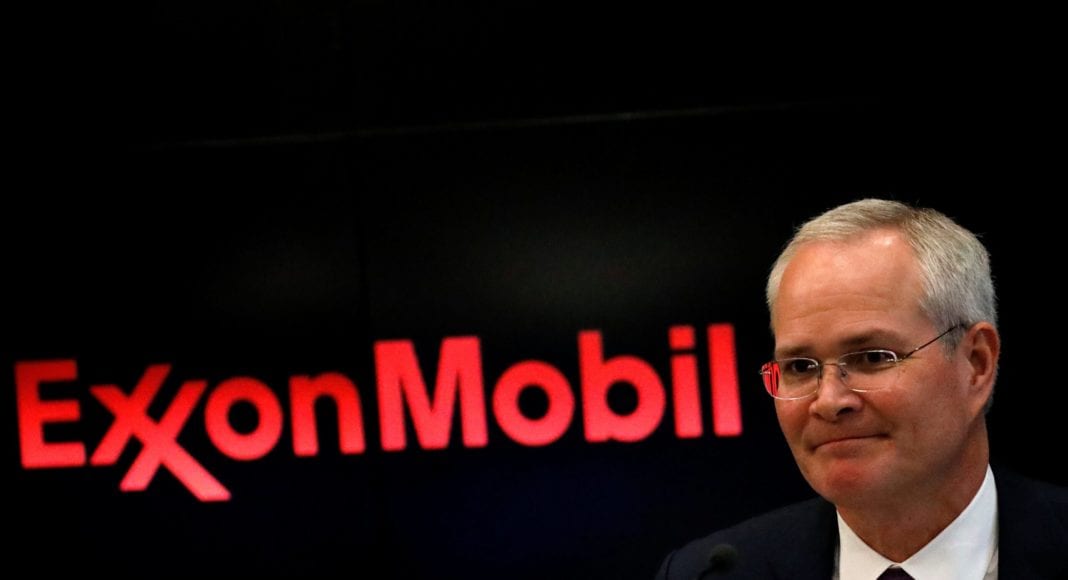ExxonMobil Corporation disclosed on Monday that it is undergoing a significant restructuring process that will result in over US$6 billion in cost savings by 2023, compared to 2019.
Effective April 1, the company will be organized along three business lines – ExxonMobil Upstream Company, ExxonMobil Product Solutions, and ExxonMobil Low Carbon Solutions. Management told the market that it will be supported by a single technology organization, ExxonMobil Technology and Engineering, and other centralized service-delivery groups providing like capabilities and building on the successful consolidation of major projects across the corporation in 2019.
Officials said the move represents a further evolution of the company’s business model and is part of its strategy to build globally competitive businesses that lead the industry in earnings and cash flow growth, operating performance, and the energy transition.
Expounding further, the company said its new ExxonMobil Product Solutions Company will engineer, manufacture and deliver products needed by modern society at an industry-leading scale, serving multiple segments, products and markets. It is expected to play a critical role in reducing greenhouse gas emissions and plastic waste by developing more sustainable products such as: lower-emissions fuels to help decarbonize commercial transportation, including aviation and marine; chemical performance products that enable customer emissions reductions in applications in the agriculture, health and renewable energy sectors; next-generation lubricants and plastics that improve efficiency for traditional and electric vehicles; and certified circular polymers that bring new life to plastic waste through advanced recycling.
ExxonMobil Product Solutions is expected to be the market leader in sales of polyethylene and other high-value chemical products and hold the No. 2 market position in aromatics, lubricants and fuel additives. Karen McKee, formerly president of ExxonMobil Chemical Company has been appointed to lead ExxonMobil Product Solutions.
As for ExxonMobil Technology and Engineering, this arm of the multinational will integrate technology activities, thereby improving value delivery through centralized management of technical capabilities tightly linked to business priorities. Priorities include developing new technologies to significantly lower the cost of scope 1, 2 and 3 emissions reductions; reducing greenhouse gas emissions at the asset level; increasing production yields and revenue; developing high-value differentiated products for customers; and improving advanced recycling of plastic waste.
Linda DuCharme, formerly president of ExxonMobil Upstream Integrated Solutions and ExxonMobil Upstream Business Development, has been appointed to lead ExxonMobil Technology and Engineering Company.
OilNOW understands that this change will also consolidate the Upstream into a single organization, ExxonMobil Upstream Company, which will be led by Liam Mallon, formerly president of ExxonMobil Upstream Oil and Gas Company.
To further collaboration and integration, the company said it will relocate its corporate headquarters from Irving, Texas, to its campus north of Houston. The move, which will be completed mid-year 2023, will enable closer teamwork to accelerate and increase value delivery through company-wide approaches.
Chief Executive Officer and Chairman, Darren Woods categorically stated that the new business structure will enable the company to more fully leverage the corporation’s scale, integration, technology advantages, and the skills and capabilities of its talented workforce, to better serve customers.
He said, “Aligning our businesses along market-focused value chains and centralizing service delivery, provides the flexibility to ensure our most capable resources are applied to the highest corporate priorities and positions us to deliver greater shareholder returns.”
Woods added, “Closer collaboration and the new streamlined business model will enable the company to grow shareholder value and position ExxonMobil for success through the energy transition.”



